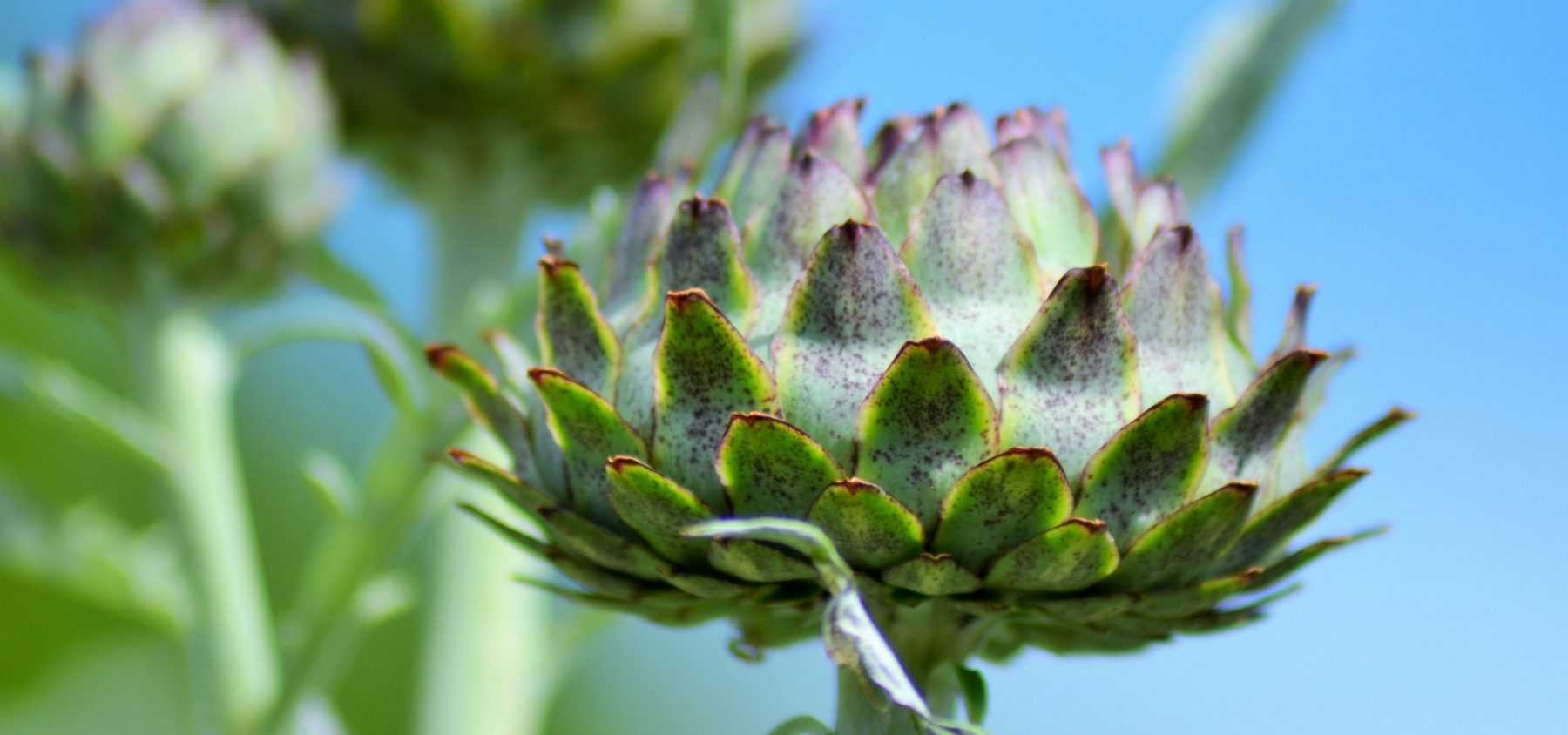
The Artichoke: Planting, Sowing, Growing and Care
Contents
The artichoke in a few words
- The artichoke is a perennial vegetable grown for its edible “heads” or capitula.
- It thrives in full sun, in cool, light and well-manured soil, grown from seeds or young plants.
- Fairly sensitive to cold (-5°C), artichokes require winter protection with a thick mulch.
- Harvest when the bracts begin to open or before the choke forms for baby artichokes.
- Artichokes propagate easily by removing offsets from parent plants.
Our expert's word
The artichoke is a flower-vegetable from the Asteraceae family. It’s a cousin of the cardoon and thistle, consumed for its inflorescence at a stage before flowering. From this unopened flower head, we eat the leaves and heart, which botanically speaking are bracts and the floral receptacle. The “artichoke season” runs from spring to autumn, depending on the variety and year of cultivation.
In France, artichokes were first cultivated in the Mediterranean region, but since the 19th century, this vegetable has mainly been grown in the west, particularly in Brittany (Finistère), where varieties have been selected for their adaptation to the mild climate. This is the case for varieties like ‘Camus de Bretagne’ and ‘Gros Vert du Laon’, whose heads are much larger than southern varieties. Today, another production area is located in the Pyrénées Orientales, where varieties such as ‘Violet de Provence’ or ‘Vert de Provence’ thrive particularly well.
Artichokes can be grown throughout France, but there’s one thing this plant dislikes: the cold! In colder regions, it must be protected with a thick mulch of leaves or straw to help it through winter. In mild regions with strong oceanic influence, this precaution is often unnecessary. It prefers a sunny position and requires rich, light soil.
To grow them in your vegetable garden, you can start from seeds or young plants. Sow early, from February onwards, indoors with warmth. Planting can be done in either spring or autumn. It’s an easy-to-grow vegetable requiring little maintenance, apart from some vigilance when the flower heads form, as they often attract aphids!
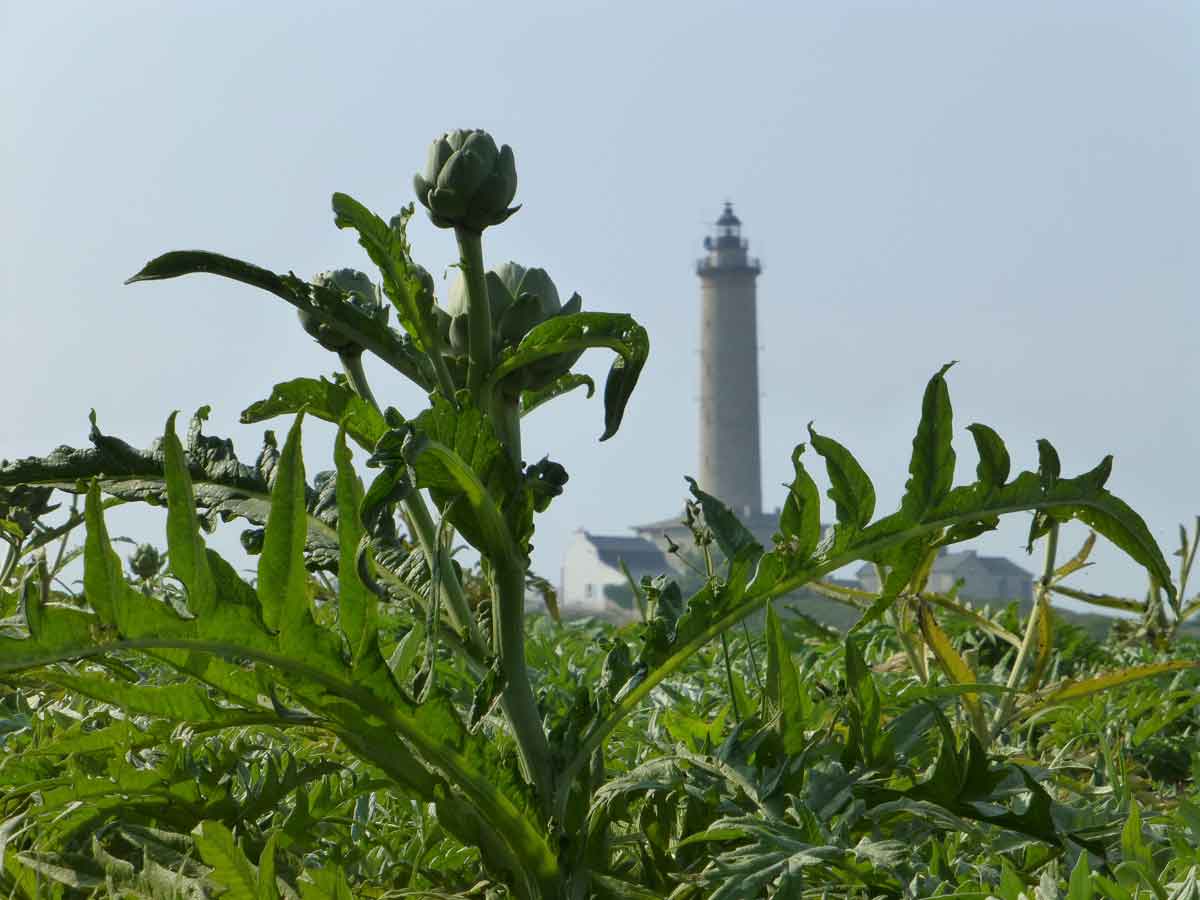
Description and botany
Botanical data
- Latin name Cynara cardunculus var. scolymus
- Family Astéracées
- Common name Artichaut
- Flowering Vivace
- Height 5 à 7 ans
- Exposure Soleil
- Soil type riche, profond, frais
- Hardiness -5°C (à protéger)
The globe artichoke is a plant native to the Mediterranean basin, more precisely from North Africa or Egypt, or even Ethiopia. It appeared at the end of the Middle Ages and is the result of successive selections by humans from the wild cardoon, itself a selection from the thistle. The artichoke arrived in Italy in the 15th century, then was introduced to France a century later and was notably promoted by Catherine de Medici, who adored artichoke hearts.
The name artichoke appeared during the Renaissance, coming from the Spanish alcachofa, a term itself derived from the Arabic al-harchof. The genus name Cynara was given by Linnaeus, coming from the Latin cinara (itself from Greek) and refers to the cardoon.
The globe artichoke (Cynara cardunculus var. scolymus) is a herbaceous perennial plant from the Asteraceae family (like lettuce, sunflower etc.). It forms a thick, rigid stem that can reach 2 metres in height, depending on the variety and growing conditions. The strongly veined and deeply lobed leaves are very large, green on top and whiter underneath. They are spineless, unlike thistle leaves.
The term “artichoke” refers both to the cultivated plant and the edible part: the flower head, more commonly called the “artichoke head”, of which we eat the leaves and the heart. These artichoke heads, borne on sturdy stems, correspond to an unopened inflorescence. The “heart” of the artichoke corresponds to the fleshy receptacle that bears numerous small flowers, commonly called “choke” (or hairs) which we remove before eating the heart. The false leaves of the artichoke head are actually the bracts of the involucre. The artichoke head is therefore harvested before flowering for consumption.
If you let an artichoke head flower (try it, it’s very pretty!), you can see multiple small tubular flowers of a blue-violet colour. After fertilisation, they develop into seeds (achenes).
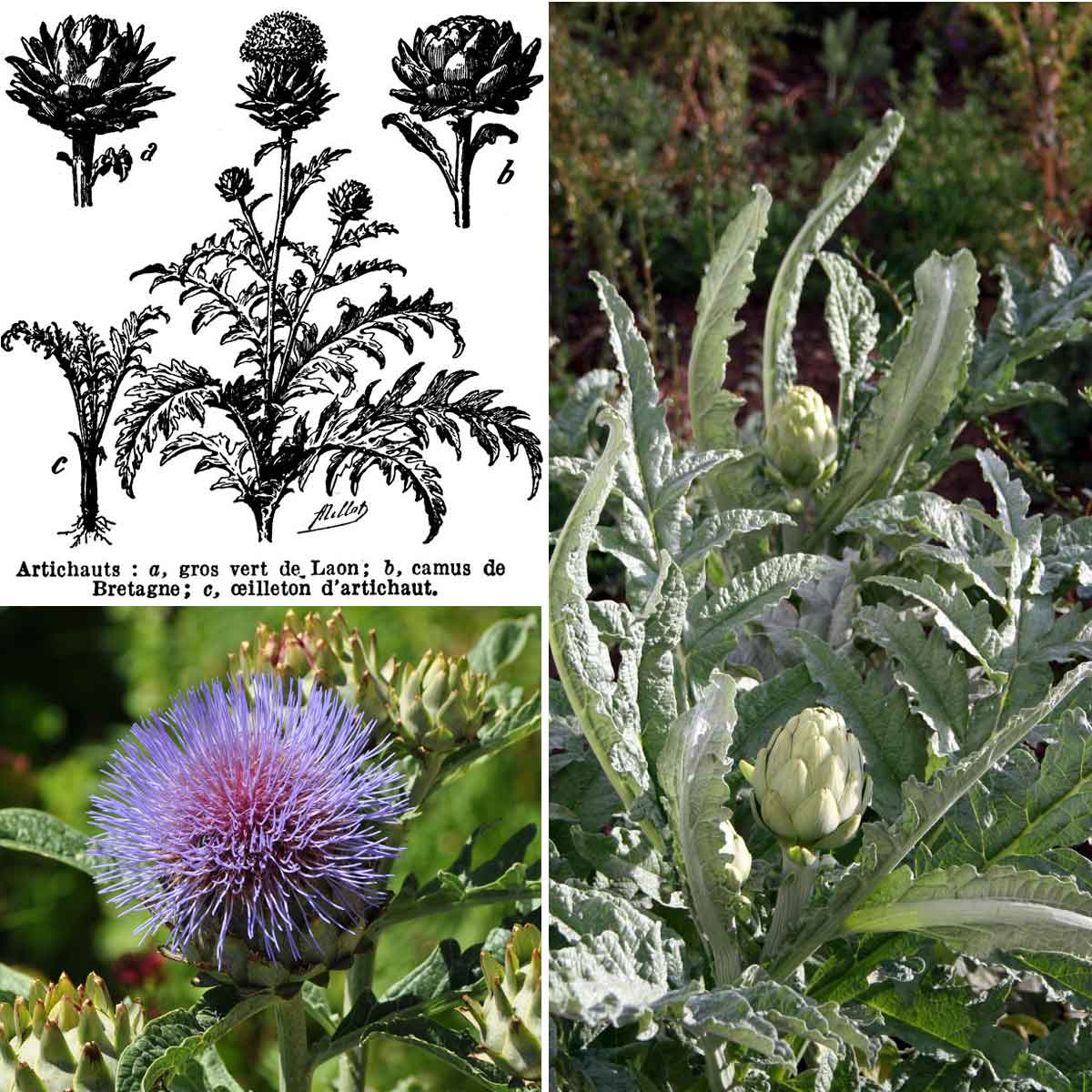
1) Botanical illustration of artichoke 2) Flowering artichoke 3) Artichoke plants
Read also
When and how to dry artichoke leaves?The Different Varieties of Artichoke
There are many varieties of artichokes that differ in colour as well as in their level of hardiness.
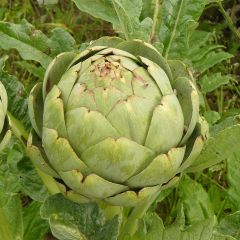
Artichoke Gros Vert de Laon
- Height at maturity 1,20 m
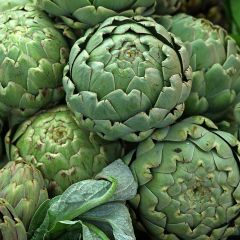
Artichoke Green Globe - Cynara scolymus
- Flowering time October, November
- Height at maturity 1,50 m
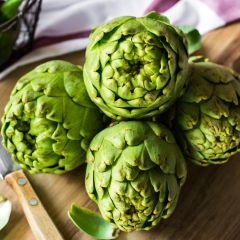
Artichoke Vert de Provence - Cynara scolymus
- Flowering time October, November
- Height at maturity 1,50 m

Organic Artichoke Violet de Provence - Ferme de Sainte Marthe seeds
- Flowering time June to November
- Height at maturity 1,50 m

Artichoke Imperial Star - Ferme de Sainte Marthe seeds
- Flowering time June to November
- Height at maturity 1,50 m
Discover other Artichoke seeds
View all →Available in 1 sizes
Available in 1 sizes
Available in 1 sizes
Available in 1 sizes
Available in 1 sizes
Available in 1 sizes
Available in 1 sizes
Available in 1 sizes
Planting artichokes
Artichokes can be planted in spring or autumn. Planting in spring will yield the first harvest in autumn, while planting in autumn allows for harvesting the following spring.
Artichokes thrive in a sunny position. They require light, well-manured soil, previously enriched with mature compost or manure at 3 to 4 kg per m2. Prepare the soil by weeding and loosening it, then level it with a rake. If your soil retains water, especially in winter, we recommend forming a mound to improve drainage and adding coarse sand or gravel to the soil.
The recommended planting distances are one metre between rows and 80 cm between each plant within the row.
How to plant artichokes?
To successfully plant your artichokes:
- Dig a hole three times the size of the root ball.
- Place the root ball and cover it with soil mixed with a little mature compost.
- Firm the soil and water to keep it moist.
- After planting, water regularly at the base but avoid overwatering to prevent root rot.
Discover our tips in our video: Dare to Grow Artichokes in Your Vegetable Garden!
Sowing
Artichoke plants can be purchased, but they can also be grown from seed. This is a very economical option if you wish to cultivate several plants.
Sowing is done in pots, indoors or in a heated shelter, from February to May. Allow 3 months between sowing and planting, which is why it’s best to start as early as possible, as early as February.
To sow artichoke seeds:
- Fill pots with compost and place one to three seeds per pot, at a depth of 1 cm,
- Cover with a little compost, lightly firm down and water gently by misting, so as not to disturb the seeds,
- Continue watering regularly but not excessively (the compost should stay moist but not waterlogged) until germination occurs.
- Once the seedlings have 5 or 6 leaves, transplant them into a larger pot, keeping only the strongest seedling if you sowed multiple seeds.
- Wait 1 to 2 months before planting them in the ground, in the garden, making sure to leave 1 metre between rows and 80 cm between plants: your little artichoke will grow big!
Dividing Globe Artichokes
A simple way to propagate artichokes is by transplanting the new shoots (offsets) found around the mother plant: this is called offsetting.
This operation is carried out in March or April. To propagate by offsets:
- Remove the offsets, complete with roots, using a knife.
- Trim the foliage by one-third to reduce evaporation and encourage new root growth,
- Replant the offset in a pot or directly in the ground.
- Firm the soil (or compost) to ensure good contact with the roots.
- Finish with a thorough watering and keep the soil moist until the plant is established.
→ Also discover Ingrid’s advice in: How to divide an artichoke?
Pairing artichokes in the vegetable garden
Due to its vigorous growth, it’s not always easy to pair artichokes with other vegetables in the garden. However, you can grow cabbages, leeks, and legumes such as broad beans, beans, and peas nearby, which will return nitrogen to the soil after harvest. You can also allow rocket to flower in spring to attract beneficial insects, helping to prevent black aphid infestations (broad beans will benefit from this too). Note that artichokes and garlic do not get along well.
Cultivation and care
The artichoke is a perennial vegetable plant with substantial growth. It settles into the garden for several years: allocate it a suitable space in the vegetable patch. For instance, position them along the edges rather than in the centre of the garden, an area reserved for plants requiring more care.
Routine maintenance involves regular but moderate weeding, hoeing, and watering. These tasks can be spaced out or significantly reduced if you mulch the soil with thin successive layers of pre-dried grass clippings or dead leaves, for example.
Being sensitive to cold, artichokes must be protected during winter: a thick layer of straw or dead leaves may suffice in mild climates. In regions with harsh winters, supplement the protection with winter fleece. → See also our advice sheet Protecting artichokes from the cold
In the second year of cultivation, the plants produce numerous suckers or offshoots. Be careful to leave only 4 or 5 per plant to prevent the plant from becoming exhausted, which would reduce its yield. The remaining offshoots can be used to start a new generation of artichokes!
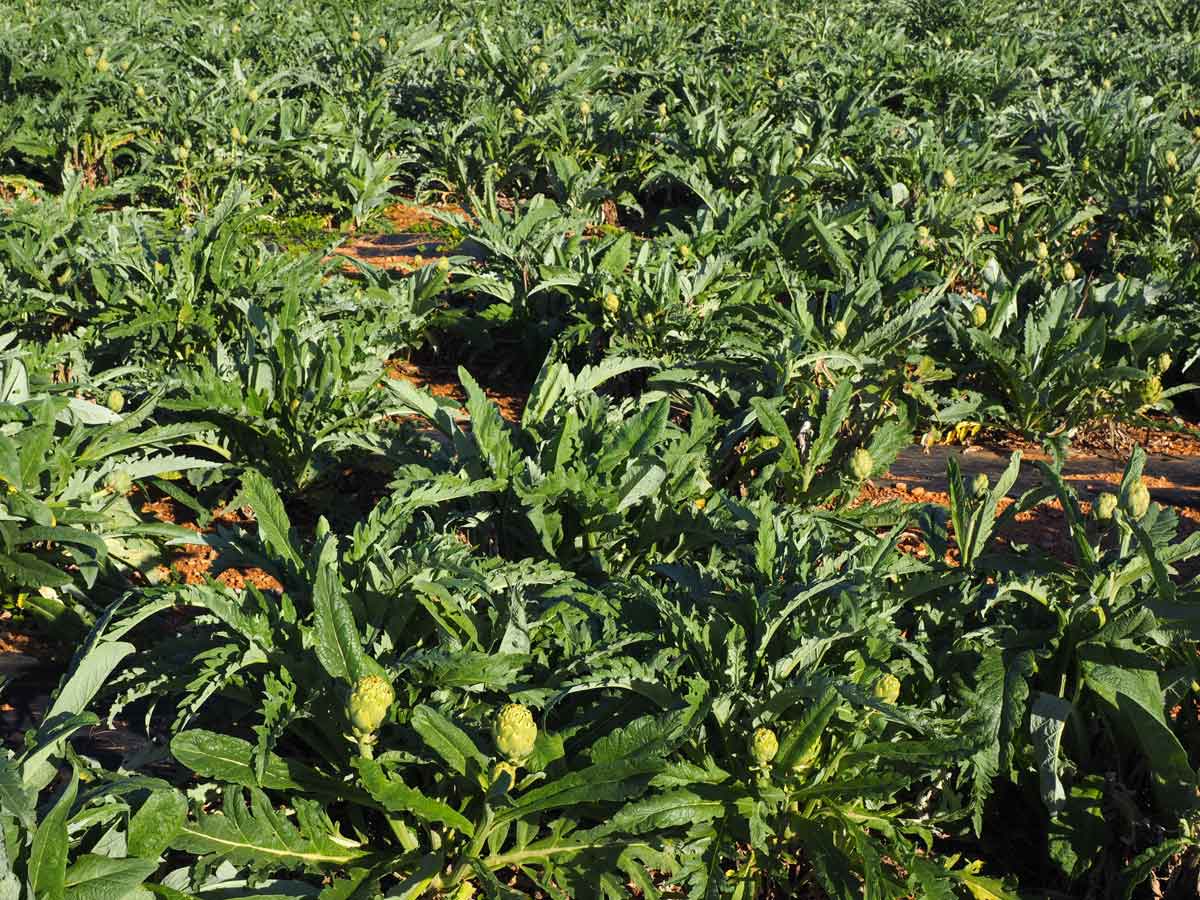
Possible diseases and pests
Artichokes are traditionally prey to black aphids, particularly when the artichoke heads are forming. Before attempting to remove them, observe whether ladybirds, lacewings, hoverflies (and other beneficial insects) have already started to regulate them. In this case, avoid intervening – nature is doing the work for you!
However, if the aphid infestation is severe and ants are protecting them from ladybird intervention, you can start by using a strong jet of water to dislodge them. Then spray with water mixed with liquid black soap (20% dilution).
Earwigs may occasionally nest between the artichoke bracts. They are not pests themselves – offer them alternative shelter by stuffing straw into terracotta pots, turning them upside down, and placing them at height, such as hanging from fruit tree branches.
The most common diseases are fungal: downy mildew and ramularia leaf spot. To prevent them, respect planting distances. Monitor foliage regularly and, if infected, spray with a Bordeaux mixture solution.
Also read Pascale’s advice in Artichoke Diseases and Pests: Identification and Treatments.
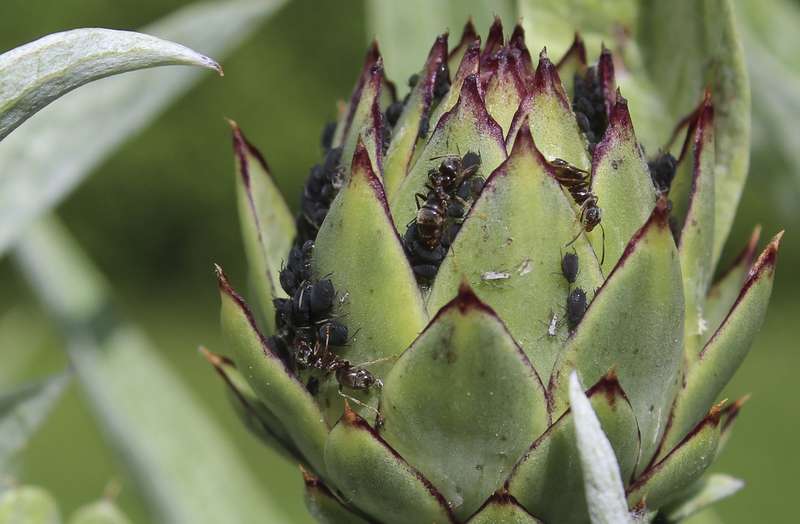
Ants harvest honeydew from black aphids and protect them from beneficial insects like ladybirds
Harvesting and storing
The harvesting period varies depending on the variety:
- White artichokes (large-headed) such as the Camus de Bretagne are harvested in spring (except for the first year in summer-autumn).
- Purple artichokes (small-headed) like the Violet de Provence are harvested in spring and autumn
The former are picked when the bracts at the top of the head begin to open. Harvesting is done simply with a knife, by cutting 10 cm below the head. The latter are picked well before they finish growing, while they are still very tender; the choke hasn’t yet formed, and the still-tender stem is also edible – this is called artichaut poivrade (baby artichoke).
Other notable information:
- The harvest decreases after 3 to 4 years, at which point it’s preferable to replant new artichoke plants.
- An artichoke head keeps for a few days in the bottom of the refrigerator; you can tell it’s losing freshness when the tips of the leaves turn black.
- For longer preservation (several months), prepare jars of artichokes in olive oil (see below).
- Unharvested flower heads produce very ornamental blooms – don’t miss out!
Culinary uses and nutritional benefits
At the table, artichoke with vinaigrette (a large white artichoke, like the Camus de Bretagne variety) is the most classic and simplest recipe to prepare, yet utterly delicious! For steaming, allow 10 to 15 minutes after the pressure cooker starts whistling.
In cooking, knowing how to trim an artichoke allows you to prepare more advanced recipes, such as this springtime “Argenteuil” artichoke bottom dish, made with artichokes, asparagus and hollandaise sauce.
Small purple artichokes (poivrades) shine particularly in carciofini recipes. They can be marinated in olive oil and preserved in jars to enjoy throughout the year, as explained in this preparation.
From a nutritional standpoint, artichokes have anti-anaemic, detoxifying, stimulating and tonic properties, and contain vitamins A, B1, B2 and C. They have beneficial effects on the liver.
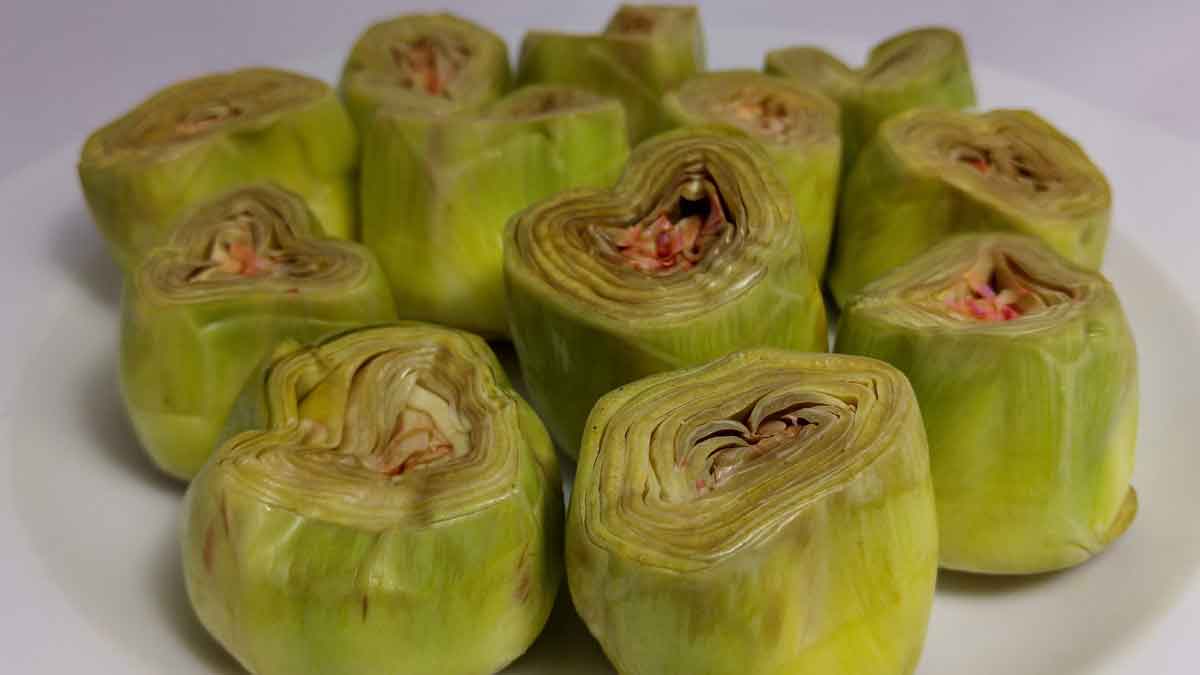
Useful resources
Discover:
- Our range of artichokes: we offer numerous varieties, available as seeds and potted plants.
- Advice sheet: Choosing the Right Artichoke.
- Advice sheet: Growing Artichokes: A Medicinal Plant with Numerous Health Benefits
- Tutorial: How to Dry Artichoke Leaves?
- Our video: Dare to Grow Artichokes in Your Vegetable Garden!
- Our tutorial: When and How to Dry Artichoke Leaves?
- Learn more about ornamental vegetables to grow in your garden
- How to Sow Artichokes? All our tips!
Frequently asked questions
-
My artichokes are infested with aphids, what should I do?
The presence of black aphids can make artichokes quite unappetising. To act quickly and effectively, you can simply use a strong jet of water to dislodge the aphids. You may then spray with water mixed with liquid black soap (20% dilution). If any aphids remain after harvesting, wash your artichokes with vinegar water.
-
My artichoke plants are dying despite winter protection measures, what should I do?
It's possible that your geographical location is too harsh for the survival of artichokes, as they typically withstand temperatures down to -5°C on average. Keep in mind that humidity is also a factor that can worsen the situation. In the case of heavy, waterlogged soil during winter combined with cold temperatures, the artichoke may not survive. Try growing more cold-resistant varieties such as 'Gros Vert du Laon' and consider raising your future planting beds to improve water drainage.
- Subscribe!
- Contents





































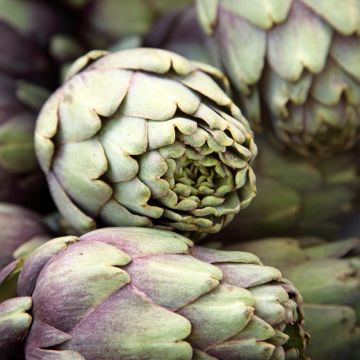
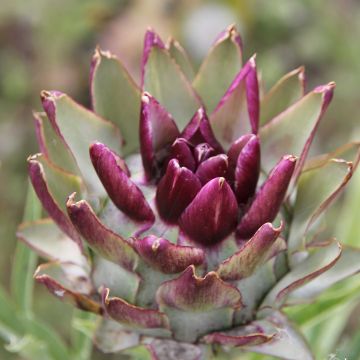

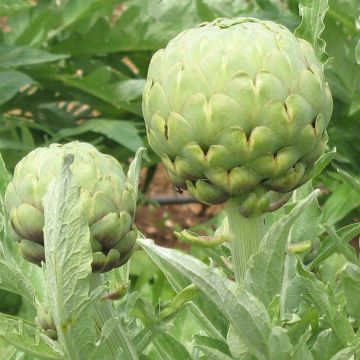
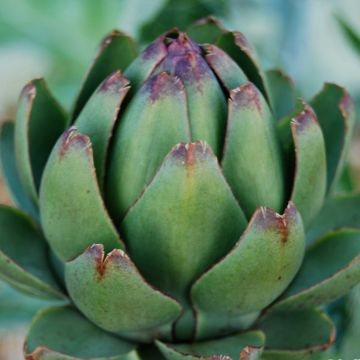
Comments